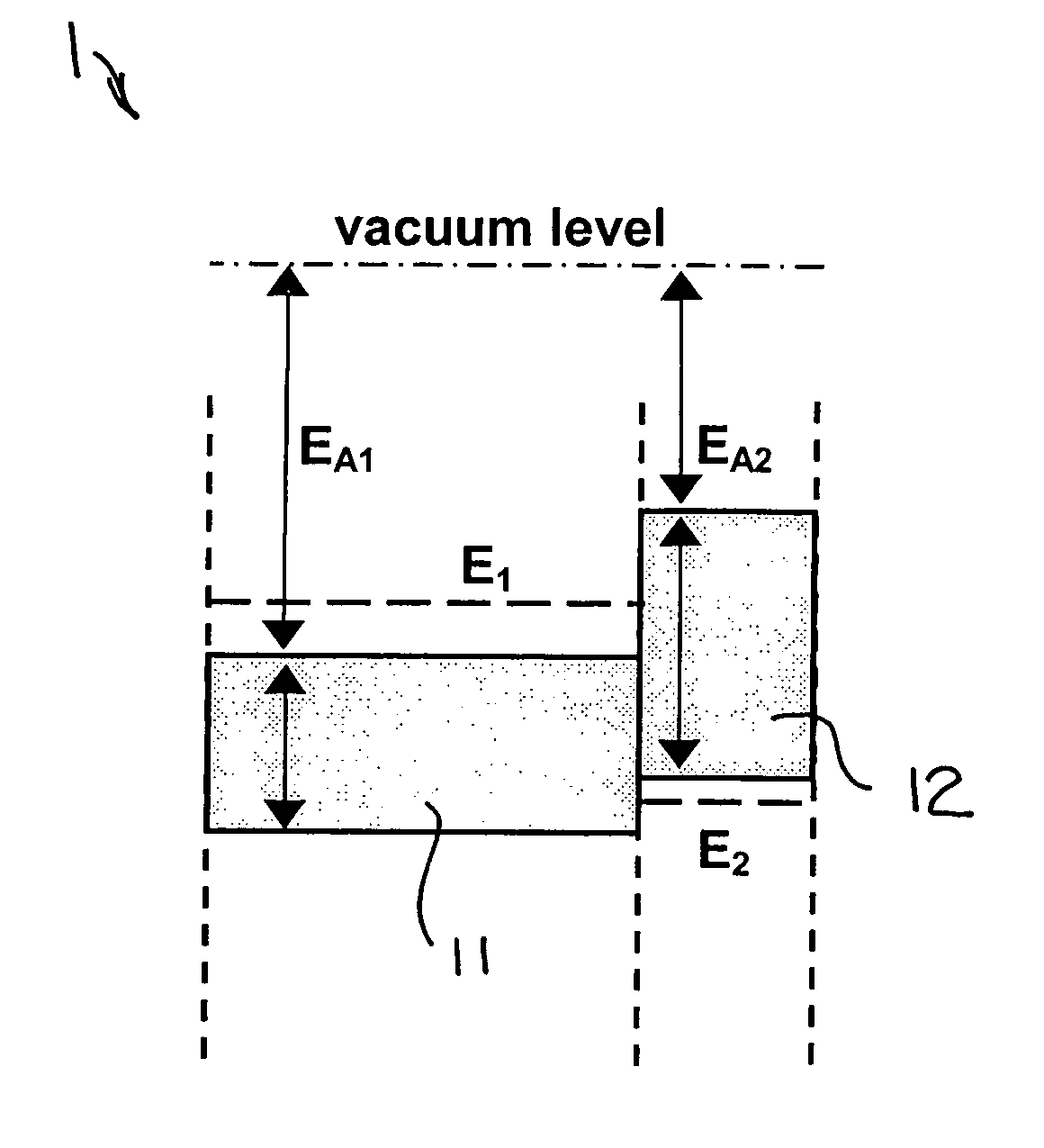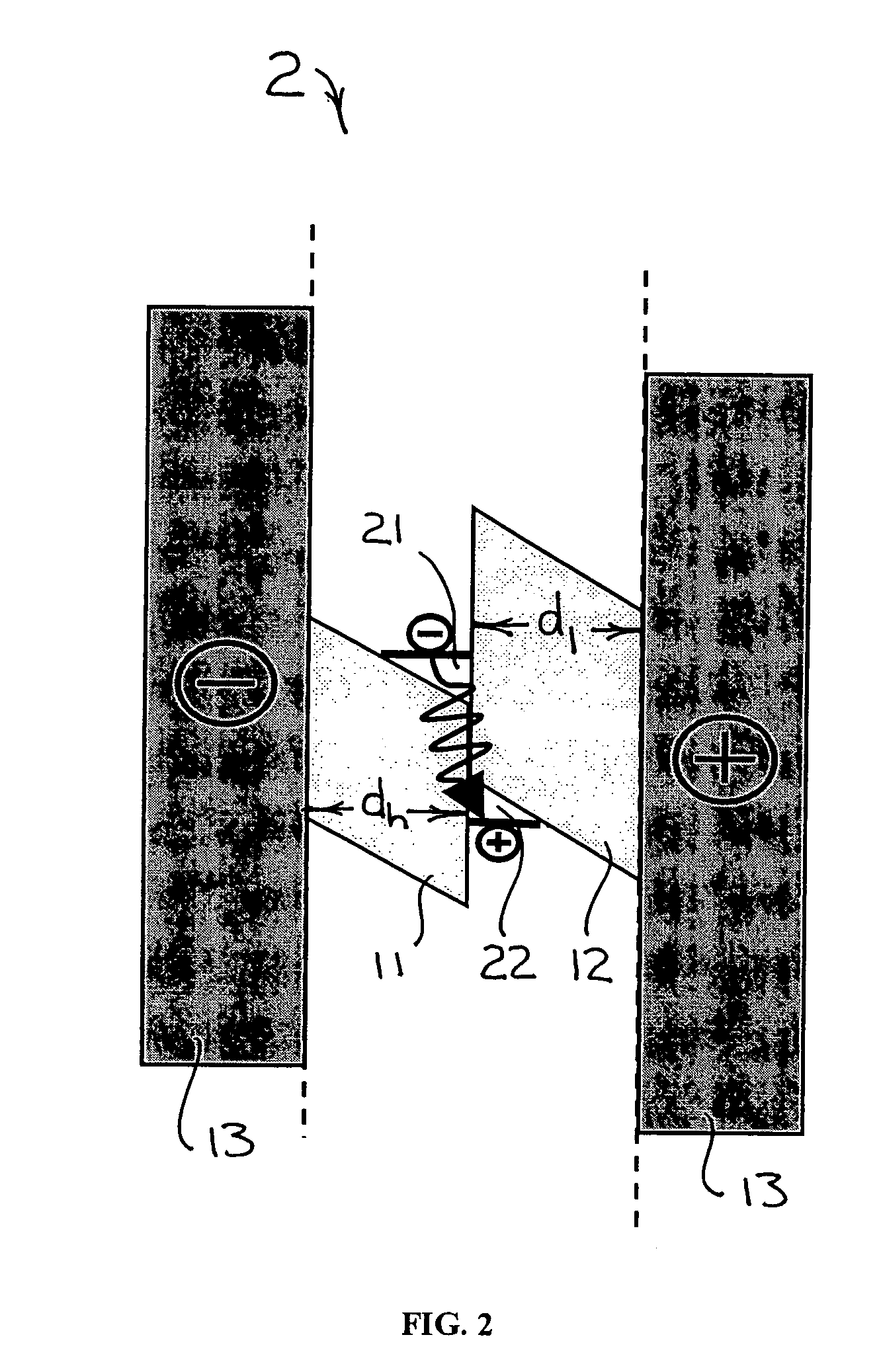Semiconductor light source with electrically tunable emission wavelength
a semiconductor and light source technology, applied in semiconductor lasers, laser details, electrical equipment, etc., can solve the problems of difficult laser wavelength tuning, serious drawbacks of suggested schemes, and inability to control the generation wavelength
- Summary
- Abstract
- Description
- Claims
- Application Information
AI Technical Summary
Problems solved by technology
Method used
Image
Examples
Embodiment Construction
[0033] The present semiconductor structures include a tunable semiconductor light source having an emission wavelength which may be electrically tunable in a wide range. FIG. 1 shows one period of the active region of a semiconductor light source 1 in accordance with an embodiment of the present invention. The semiconductor light source has an electrically tunable emission wavelength provided by two semiconductor layers, 11 and 12, with type-II band alignment. Layer 11 is characterized by higher electron affinity, and layer 12 is characterized by lower electron affinity. As used herein, the terms “higher” and “lower” electron affinity are relative to each other.
[0034] The purpose of the active region is to form energy levels E1 and E2 for the optical transition. The radiation wavelength λ is related to the energy separation E=E1−E2:
λ=hc / E,
where h is the Planck constant and c is the light velocity in vacuum. The active region comprises two layers of semiconductor materials with e...
PUM
 Login to View More
Login to View More Abstract
Description
Claims
Application Information
 Login to View More
Login to View More - R&D
- Intellectual Property
- Life Sciences
- Materials
- Tech Scout
- Unparalleled Data Quality
- Higher Quality Content
- 60% Fewer Hallucinations
Browse by: Latest US Patents, China's latest patents, Technical Efficacy Thesaurus, Application Domain, Technology Topic, Popular Technical Reports.
© 2025 PatSnap. All rights reserved.Legal|Privacy policy|Modern Slavery Act Transparency Statement|Sitemap|About US| Contact US: help@patsnap.com



